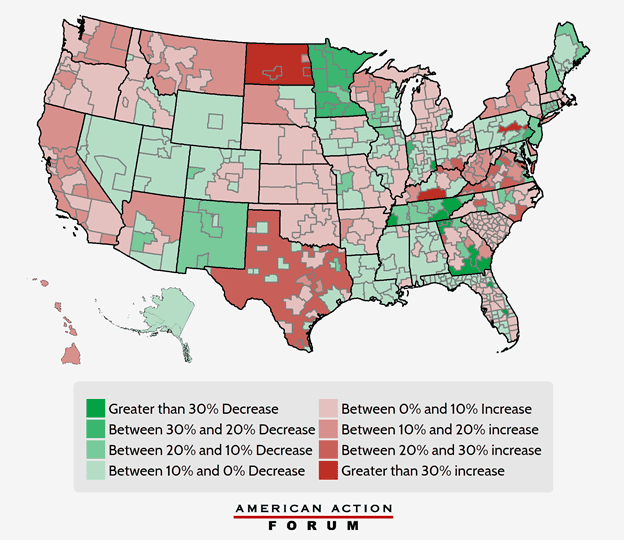Weekly Checkup
December 14, 2018
Looking Back at Health Policy in the 115th Congress
As the 115th Congress draws to a close, legislators are finishing up work on the IMPROVE Act, which passed the House on Tuesday and is headed to the Senate. The legislation targets pharmaceutical companies that intentionally misclassify their drugs to get higher payments from Medicaid, and seeks to improve care for Medicaid-eligible children with uniquely complicated health conditions, along with a number of other Medicaid policy extensions. While the IMPROVE Act may be one of this Congress’s last health care policy accomplishments, it is far from the only one.
With so much media attention devoted to the question of replacing the Affordable Care Act (ACA), particularly in 2017, it might be easy to miss just how much health policy was enacted in the 115th Congress. Here are a few actions you might have forgotten or missed altogether:
* The Food and Drug Administration (FDA) Reauthorization Act of 2017, signed by President Trump in August 2017, reauthorized the FDA user fee programs, ensuring the FDA will continue to have the resources it needs to quickly review and deliver to the American people safe and effective treatments and medical devices.
* To address the opioid crisis, Congress enacted the SUPPORT for Patients and Communities Act in October 2018. This legislation makes it easier for the U.S. Postal Service to intercept shipments of fentanyl entering the country, primarily from China, and makes changes to the “IMD Exclusion” that limit Medicaid reimbursement to large inpatient treatment centers (the Trump Administration is seeking to go further via waivers). Additionally, the legislation seeks to loosen restrictions on physicians licensed to prescribe buprenorphine among many other provisions.
* As part of the Bipartisan Budget Act of 2018 (BBA 2018), which was enacted in February, Congress extended funding for the Children’s Health Insurance Program (CHIP) for 10 years. CHIP provides health coverage to roughly 9 million children from families with income between 138 percent and 405 percent of the federal poverty level, depending on the state.
* Also as part of the BBA 2018, Republicans followed through on repealing the ACA’s Independent Payment Advisory Board (IPAB), which was intended to slow spending growth in Medicare. Along with many conservatives, however, AAF’s Tara O’Neill Hayes argued over two years ago that “IPAB is not likely to be successful in sustainably reducing health care costs without having harmful effects on Medicare beneficiaries.”
* The BBA 2018 also included provisions funding community health centers for 2 years; providing $2 billion in new funding for the National Institutes of Health and an additional $6 billion to combat opioid abuse; permanently repealing Medicare’s limitations on reimbursement for physical therapy treatment; and significantly changing the insurer, patient, and drug manufacturer liability for coverage of prescription drugs in the Medicare Part D program’s “coverage gap.”
* In September 2018, Congress enacted the Patients Right to Know Drug Prices Act, which prohibits insurers or pharmacy benefit managers from contractually prohibiting pharmacists from informing patients if it would be cheaper for them to pay out of pocket for their medications, as opposed to using their insurance. These so-called “gag clauses” can leave pharmacists unable to help their patients pay the lowest amount possible for their prescription medications.
* Last but not least, as part of the Tax Cut and Jobs Act of 2017, Congress repealed the ACA’s individual mandate penalty for failure to purchase ACA-approved health insurance, freeing Americans to buy the insurance that best meets their needs or no insurance at all.
While some of these initiatives were controversial and will continue to be debated, many of them garnered bipartisan support. As we enter the 116th Congress, let’s hope the accomplishments on this list portend that there is still room for bipartisan policy making in health care.
Chart Review
Jonathan Keisling, Health Care Policy Analyst
Premiums on the Affordable Care Act’s individual market exchanges were stable on average, but averages mask a lot of variation, as AAF’s analysis of premiums explains. The 1 percent average increase in benchmark premiums includes premium increases and premium decreases that are greater than 30 percent, as shown in the map below comparing 2018 and 2019 benchmark premiums.
Worth a Look
Wall Street Journal: The Loneliest Generation: Americans, More Than Ever, Are Aging Alone
STAT: Gottlieb blasts high insulin prices, touts far-off new rules he says will spur competition in that market











